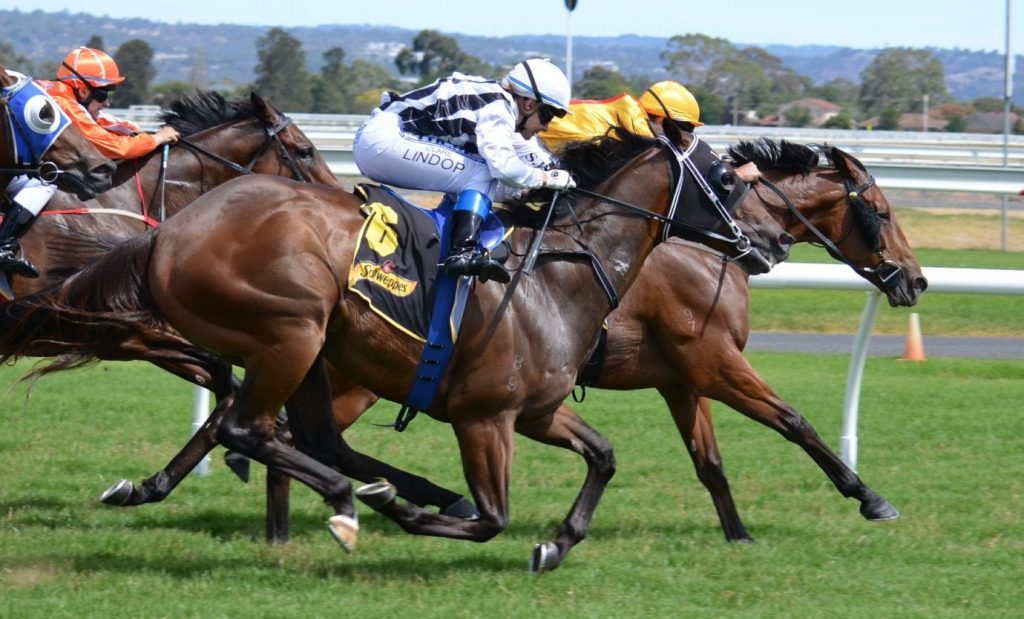Hitting an animal is incredibly hard to defend.
In fact, the only person I can think of who you can make an exception for is Mick Fanning; or the guy from the more recent shark attack in QLD.
Yet I’ve made a living out of riding horses, and yes- over my career I’ve been guilty of using the whip too often in a race sometimes. Pushing the limits on these beautiful animals, who run simply for the sheer joy of running.
Doesn’t sound good does it?
10 years ago, Racing Australia first announced a riding rule to define “overuse” of the whip: 5 times prior to the 100m and then in that last few seconds of a race “unrestricted” (if you’re in the finish).
There was an outcry in our Sport that we were pandering to the uneducated! But we adapted and moved on, and really there was no noticeable change in betting confidence.
So why wouldn’t more change and the evolution of increased yet fairer restrictions be okay?
And why do we continue to ignore public perception, and not explain as a jockey what we are doing by “riding a horse out”?
Something that was lost amongst the rule changes was the introduction of the Padded Whip in 2009, which was a Landmark decision in our Industry; and I believe a missed opportunity to promote and bring the public with us on our animal welfare improvements.
When you are riding a horse out vigorously, a jockey uses their whole body to help lift and push a horse. It’s a similar action used to get a playground swing to move or row a boat. We are pushing and pulling, and the Persuader becomes an extension of us, used also for balance and for increased momentum, not dissimilar to a ski pole or a balancing stick used by a tight rope walker.
It’s also a communication aid, for care and control, and yes- it’s an instruction tool to signal “time to go”. To help switch legs, rebalance and to ask for the one final effort because the finish line is in sight. They extend for us because we are with them in that fight or flight mode, pushing ourselves too, stretching for one last effort, carrying them to gain an inch from their strides.
Something that hasn’t been discussed is that the European jockey rules allows the “whip arm” above their shoulder. We don’t do this Australia; we are not allowed to raise the arm above our shoulders. Our style is lower and appears faster, in rhythm to “ask” for effort. In the same way a Stallion nips a mare to run in the herd, or Mum nips a foal to keep them in line. That’s the language, the communication.
Focusing on the “number of hits” is unpalatable to modern society. And the rules have created more grey area and frustration for the participants. As we are discovering if a rider breaches the number of “hits”, the penalties are inconsistent. A suspension feels to harsh (unless you are a repeat offender) and a fine too light (it’s a donation to the “Jockeys Trust” anyway). In this cutthroat industry, the win is so important; you must keep your trainer and owner happy, and your name in the winners list.
I can’t even begin to tell you as a rider how frustrating it is when you ride within the rules, but then get beaten by someone who is breaking the rules. Basically, it’s cheating. The most un-Australian thing of all.
So, we need a rule that provides a level playing field. That’s all that anyone wants in any sport.
Where do we want Racing in Australia to be in 10 years’ time?
Our owners are what keeps our industry flourishing. We need keep evolving to keep and attract good people into our sport. The type of owners that will still pay the bills for the love of the horse if their “derby/oaks dream” turns into, “any old maiden will do…”!
Gambling revenue does drive our industry, something which keeps our prizemoney to levels which allows our industry which is accessible to all; the best part about Australian Racing I believe.
A balance needs to be found- with all industry participants getting on board. As the current custodians of this great sport we all need to adapt.
I would like to see “consecutive strides” banned; this gives your horse a chance to respond after being “asked for effort”, but still allows for the Australian style of waving the Persuader. If we have a maximum number for the last 100m then we need to enforce this rule by the relegation of your position if breached. Until the owner, trainer and punter are also affected we won’t see a true change.
Jockeys always have tried to work on new styles and over recent years we have seen significant incremental change as it is, and I am sure that learning new skills and different techniques is possible. And don’t worry I for one feel the irony in this statement, when I began as a young female jockey, I was told repeatedly to get stronger and be more vigorous or “I would not make it”. But times change.
Racing Australia have spoken about education and training. Well its time we presented our Sport in its best light, and reward those who keep to best practice.
When you think about it, there is only about 600 licenced jockeys in Australia out of a population of nearly 25 Million people.
That’s incredible.
It’s a privilege to do the job we do; lucky to be the right size and ability to race our magnificent animals in this elite high-performance sport. And we need to take the responsibility seriously.
-Clare Lindop 2020


Great read Clare from someone in the know.
Not sure where the rules are now, but I will never forget my first horse be robbed of her victory at Terang ridden perfectly within the rules by apprentice Lily Coombe only beaten on the line by a nose in a photo. The penalty for the jockey “cheating”, $300 fine, no doubt paid for by the other horses owners or trainer. My horse never got to win her maiden because the trainer, jockey nor horse cheated.
I’ve never felt the punishment fitted the crime, and I will never forget it. Have I ever lost a race punting by a jockey cheating, almost guaranteed. Great piece Clare, indicative of why you was and always will be the pioneer of female jockey’s growth not only in South Australia, but the whole of Australia
Briliant article! Thank you Clare, very well written and makes the reader feel like we’re riding the horse with you.
Hard to argue against and this sort of communication shows why the jockey’s need to be consulted first before any ruling is made in regards to race riding.
For the rest of us, we’ll keep punting!
Clare, an excellent article. A commonsense approach to the use of the whip. Regards
Kevin